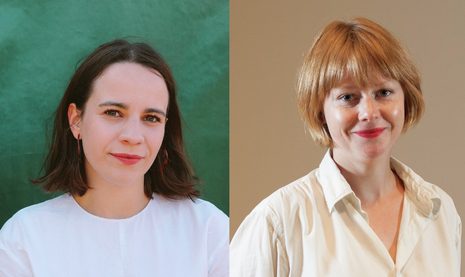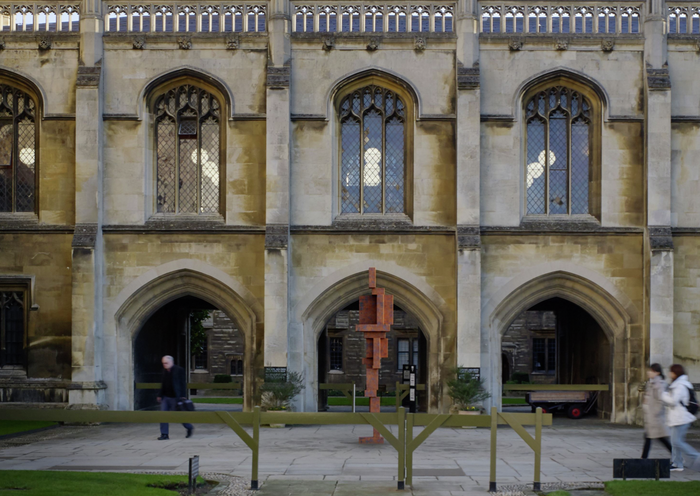‘The most life-affirming job in the world’: Talking curation with the Women’s Art Collection
Why does female art remain marginalised? Curators Naomi Polonsky and Harriet Loffler believe there are still glass ceilings to be smashed

With over 600 works from a diverse and international group of women, the Women’s Art Collection is the largest of its kind in Europe, and should be identified as such. Assistant curator Naomi Polonsky puts it well — "it’s not just a women’s art collection, it’s the Women’s Art Collection."
It’s not just a women’s art collection, it’s the Women’s Art Collection
Yet in spite of this, the general public remain fairly oblivious to its existence. Lead curator Harriet Loffler reflects how "we aren’t part of the mainstream — when people think about Cambridge University they think about the older colleges and it’s difficult to change people’s perceptions." Indeed, the relative neglect of Murray Edwards — a piece of brutalist artwork in itself — has enabled the collection to stay hidden within its walls.
This includes a lack of engagement from the student population in Cambridge, despite the University’s flourishing and prolific creative scene. Loffler points out that the collection offers a collaborative and interactive space for student artists; "we have done some brilliant things already — collaborating with BAIT, working with Alayo Akinkugbe and Anastasia Kolomiets on a Black feminist artists’ tour, a life-drawing event with digital projections that was part of the recent Rising Tide exhibition at the UL. The list goes on…"
But what has caused the collection, despite being open to the public everyday and free to access, to remain so marginalised? Part of the problem was the collection’s conflicting title, which, until recently, remained prefaced by New Hall, Murray Edwards’ previous name. Changing its name was the first step in strengthening its identity and has already translated into real change, says Polonsky: "the Porters tell me that there is a palpable increase in the number of visitors coming to see the Collection, so the name change has achieved its main goal!"
In addition to improving its visibility, the change was also motivated by a desire to "highlight the collection’s founding aim of promoting and celebrating women artists ... on average only 7% of works in national museum collections are by women." This fact, in combination with the complicated past of the name of Murray Edwards College, "was holding [the collection] back from becoming better known and giving our artists the recognition they deserve."
Directorial roles are rarely occupied by women, and many museums around the world have never had a female director
However, the collection is led by an all-female team, and whilst female artwork is massively underrepresented, Polonsky reveals "curating as a profession is in fact extremely female. But there’s still a glass ceiling. Directorial roles are rarely occupied by women, and many museums around the world have never had a female director." Fortunately this is changing, as Polonsky notes: "it’s heartening to see women such as Maria Balshaw, Frances Morris and Caroline Campbell take up director roles at major museums."
As a female student myself though, I see art curation as quite an esoteric profession. I for one imagine an owl-like man marking up museum walls, speaking a language of oil-paints and measuring tape. But Polonsky assures me "curating is [only] mysterious because it can take so many different forms. The famous curator Harald Szeemann described the role as “custodian, sensitive art lover, writer of prefaces, librarian, manager, accountant, animator, conservator, financier, diplomat." Most curators nowadays, particularly in smaller institutions, have very wide-ranging responsibilities."
I realised that curating, like journalism, was a form of communicating — between artists and the public
Was Polonsky always set on this profession? "When I was growing up I always wanted to be a journalist. I did my undergraduate degree in Modern Languages, and during my year abroad, I did an internship in a museum and fell in love with art. I realised that curating, like journalism, was a form of communicating — between artists and the public." Both Loffler and Polonsky studied a Masters in Curating at prestigious institutions prior to taking up their positions, but reiterate that there is no 'right’ way into the industry, and detail how finding inspiration in unexpected places opened them up to a wealth of opportunities.
Loffler emphasises her direct experiences and interactions with curation, detailing how her desire to work in the arts "began with an installation by Laurie Anderson and Brian Eno for Artangel — an organisation that commissions artists to make work in unexpected places. [They] took over a self-storage warehouse and filled it with surprising pieces and encounters. It changed the way I saw the world around me and made me want to learn more about contemporary art."
It’s this kind of curiosity and willingness to learn which enables participation in this niche, yet utterly fascinating world. "There are no clear career paths into curating', Polonsky tells me. "It’s a very competitive and precarious industry, but try to get any opportunities you can and don’t be discouraged by setbacks. If you can make it work, it’s the most fun and life-affirming job in the world."
To learn more about the Women’s Art Collection and its curators, visit their website.
 News / Uni Scout and Guide Club affirms trans inclusion 12 December 2025
News / Uni Scout and Guide Club affirms trans inclusion 12 December 2025 News / Cambridge Vet School gets lifeline year to stay accredited28 November 2025
News / Cambridge Vet School gets lifeline year to stay accredited28 November 2025 News / Cambridge study finds students learn better with notes than AI13 December 2025
News / Cambridge study finds students learn better with notes than AI13 December 2025 Science / Did your ex trip on King’s Parade? The science behind the ‘ick’12 December 2025
Science / Did your ex trip on King’s Parade? The science behind the ‘ick’12 December 2025 News / Pembroke to convert listed office building into accom9 December 2025
News / Pembroke to convert listed office building into accom9 December 2025









